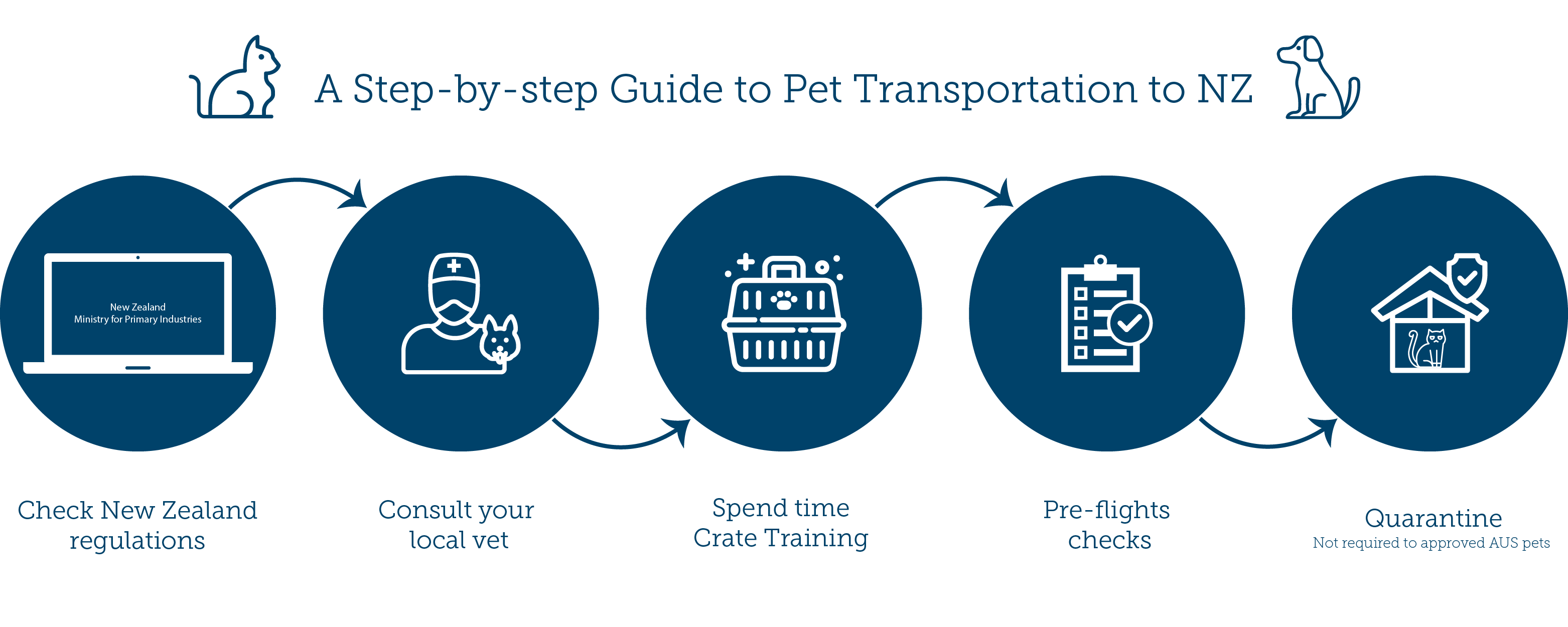Moving to a new country can be both exciting and daunting at the same time. And of course, a move to a new country wouldn’t be complete without your furry companion by your side. When it comes to importing animals, New Zealand has complexed and strict biosecurity measures in place for live animal transportation. Here to help us ensure that your pets arrive safely in New Zealand is Sally Graham, the National Sales and Accounts Manager from Jetpets.
Jetpets are the experts in domestic and international pet transportation since 1991. Their team of animal loving specialists include Pet Travel Consultants, Pet Handlers and In house Vets who provide expert health advice to ensure that your best friend enjoys a safe and comfortable journey. They have been awarded with The Centre of Excellence for Live Animal Logistic (CEIV) Certification and is one of only five companies in the world to receive this award, so you can guarantee that your pets will travel safely and securely to New Zealand.
Grace Removals and Jetpets have put together this step-by-step guide together to explain the process when transporting your pet to New Zealand.

Step One: Research New Zealand’s customs, quarantine rules and timeframes
The first step is to visit the Ministry for Primary Industries (MPI) website and familiarise yourself with import health standards, guidance document and checklist for cats and dogs. Also, make sure you check what the current regulations are and import permit requirements.
Pet owners from Australia including Norfolk Island are not required to apply for a permit, however, they must ensure that their pets are approved for travel by their vet.
Also, ensure that your pet is not a prohibited breed or type. According to Sally, the following breeds or types are banned in New Zealand:
- American Pit Bull terrier
- Dogo Argentino
- Japanese Tosa
- Brazilian Fila
- Perro de Presa Canario
- Any crosses with the above breeds
- Hybrids
Timeframe
According to Sally “Timing is very important when travelling to New Zealand. You should work backwards from the arrival date because there are vet consultations required prior to travel. There are specific NZ Government regulations and requirements at designated timeframes. It’s advisable to allow 3-4 weeks’ notice before planning your travel to ensure the appropriate documentation and veterinary requirements are carried out.”
This timeframe may be affected if there is “incorrect documentation, out of date vaccination certificates and treatments that doesn’t meet the MPI guidelines”, so ensure that you’ve finalised all relevant documents before you depart.
Step Two: Consult your vet
Second step is to get your vet’s approval to confirm that your pet is fit for travel. During the consultation, ensure that you get all the necessary documents, treatment and medications for overseas travel. Finally, make sure you pet has been microchipped, if not consult your vet about getting your pet microchipped during the consult. Remember, you may be required to present a veterinary certificate to NZ Customs.
Step Three: Training time
Before you begin the actual transportation, it’s important to consider how your pet will feel during the process. Also, it’s imperative that you think about your pet’s personality. Some pets are comfortable being transported, however, anxious animals may need more training to ensure that they’re accustomed to being confined in a crate. “It’s important that pets are able to stand upright in their crate, turn around and lie down in a comfortable manner”, says Sally. Training may take several weeks or months, so start early and limit the duration to 10-15 minutes a day and reward accordingly.
Crate sizing is one of the most important parts to ensuring your pets are comfortable for their journey. Pets need to be transported using an IATA (International Air Transportation Association) approved travel crate.
Step Four: Pre-flight checks
Before your flight, remember to:
- Provide your furry friend a light meal 6-8 hours before flying to prevent them from soiling their crate
- Ensure all their documentation is in place
- Give them plenty of opportunities to go to the toilet
- Get them to stretch their legs and exercise
- Secure an Adaptil collar on your dog and spritz a relaxing spray on your cat should they be anxious travellers
Step Five: Quarantine
Compliant dogs and cats from Australia are not required to quarantine when they arrive in New Zealand. However, pets from all other countries must be quarantined for a minimum of 10 days and you must find an approved quarantine facility to accommodate your pet’s stay. To read more about the Quarantine Facilities available in New Zealand, visit the Ministry for Primary Industries page.
Avoid all the headaches involved and get help from the experts
With over 30 years’ experience, Jetpets can safely and securely transport your fur babies to New Zealand and all over the world. They can arrange a complete door-to-door pet transport service and will provide you a personalised itinerary. To find out how Jetpets can help you transport your best friend to New Zealand, visit their page.


